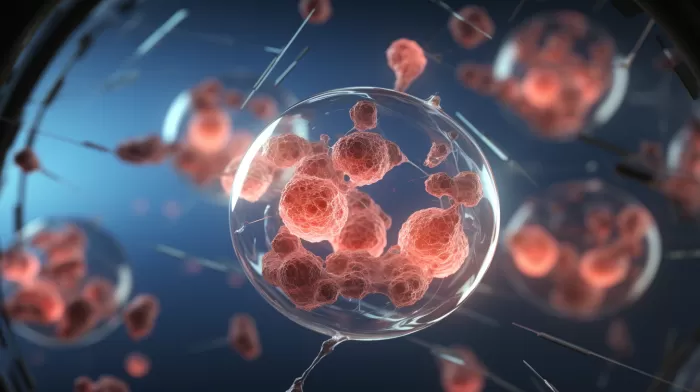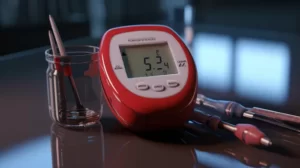Imagine a world where, instead of receiving pharmaceutical injections, doctors use your own cells to heal your body. This incredible medical technology, known as stem cell therapy, is already being used to treat various conditions such as autoimmune diseases and spinal cord injuries.
Stem Cell Basics
Stem cells have the unique ability to self-renew (make copies of themselves) and differentiate (turn into various other tissue types). Due to this, they are seen as a way to restore healthy new tissue in the human body, providing healing from a range of diseases.
There are various types of stem cells. You may have heard of embryonic stem cells due to the ethical debate surrounding their use, but they’re not the only ones available to science and modern medicine. Other types include tissue-specific stem cells such as bone marrow cells that make red blood cells and induced pluripotent stem (iPS) cells which are engineered in the lab to make skin cells behave like embryonic stem cells.
However, the most exciting type of stem cell is adult mesenchymal cells. These cells can be easily harvested from our very own belly fat and then injected back into our body to initiate healing.
The Exciting Potential of Adult Mesenchymal Stem Cells
Adult mesenchymal stem cells can be found in abundance in our body, specifically in the fat stored in our bellies, thighs, and even love handles. These fatty deposits are estimated to have thousands of times more stem cells than our bone marrow.
The procedure of harvesting and using mesenchymal cells is similar to liposuction. Performed under local anesthesia, just 2 ounces of your own fat needs to be extracted, which is immediately processed in a sterile FDA-approved device to isolate your mesenchymal stem cells and necessary growth factors to heal tissue. This condensed collection of cells is called the Stromal Vascular Fraction (SVF).
Within 90 minutes, the cells are “deployed” back into your body using minimally invasive methods. Depending on your condition, stem cells can either be infused by an IV route or injected directly into your joints, tendons, or ligaments, often using ultrasound guidance.
When placed in the right environment, these stem cells differentiate into various tissue types such as bone, cartilage, muscle, fat, collagen, nerves, blood vessels, or skin. Since these are your own cells, there’s no risk of rejection.
Although the entire procedure takes a few hours, it can offer a lifetime cure. In a few months, the cells grow into tissue like the surrounding tissue where they were replaced.
The Wide Range of Conditions Stem Cell Therapy Can Treat
Fat-derived adult mesenchymal stem cells can change into a variety of cell and tissue types, so they are being used to treat various health conditions in the areas of urology, cosmetic surgery, ear, nose, & throat, sports medicine, functional medicine, orthopedics, internal medicine, and cardiology.
Stem cell therapy is on track to potentially cure conditions such as:
- Autoimmune diseases
- Arthritis in the back, neck, shoulder, hip, knee, elbow, hand, and spine
- Cardiovascular disorders: congestive heart failure, cardiomyopathy, post-myocardial infarction. Adult mesenchymal stem cells are shown to be chemically transformed into cardiomyocytes (new heart tissue cells)
- Lung diseases: asthma, COPD
- Neurological disorders: multiple sclerosis, peripheral neuropathy, Parkinson’s, muscular dystrophy, ALS, stroke damage, incomplete spinal cord injury
- Skin conditions
- Urologic conditions: erectile dysfunction, interstitial cystitis, male incontinence
- Wellness and rejuvenation
As you can imagine, stem cell research is a significant area of scientific study, and it is already showing results in healthcare. However, the use of stem cells for therapeutic use is still considered “investigational” by the FDA, making it somewhat challenging to receive these treatments easily.
Yet, there is the possibility of undergoing stem cell therapy under an “investigational use” method for clinical research, making it both legal and available. If you’re interested in knowing more about this remarkable therapy and how to pursue it, the National Institutes of Health Stem Cell Information resource is an excellent place to start.



